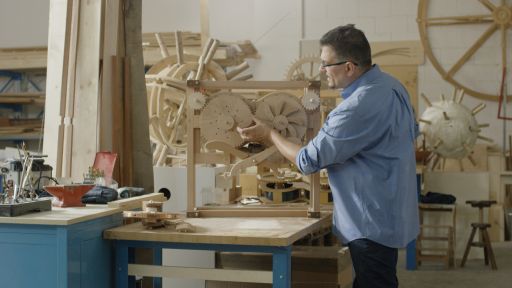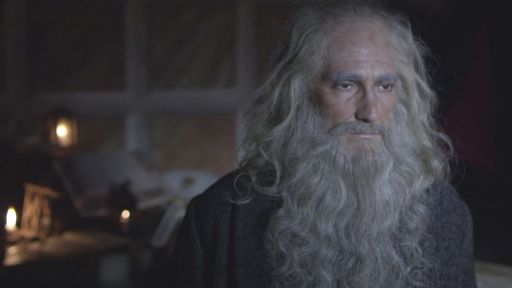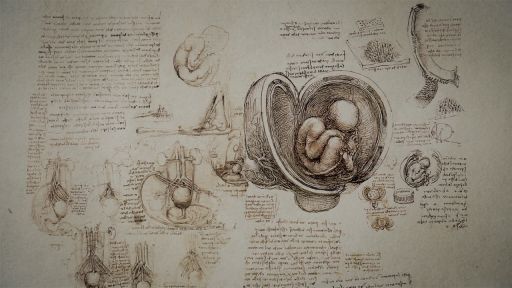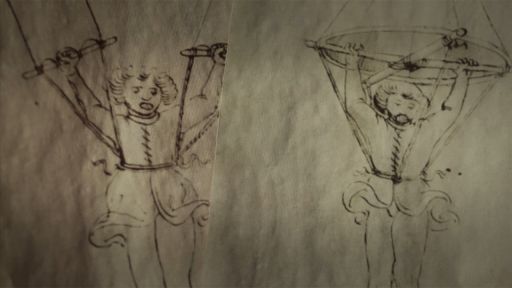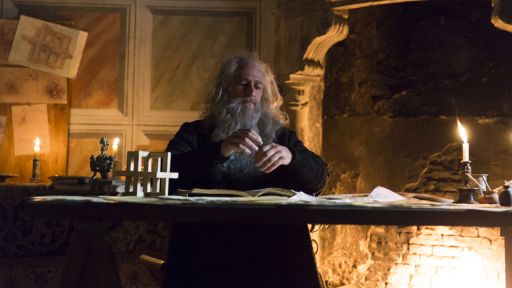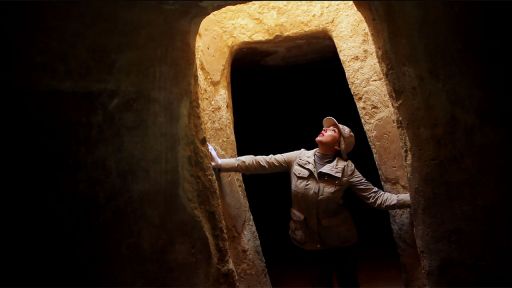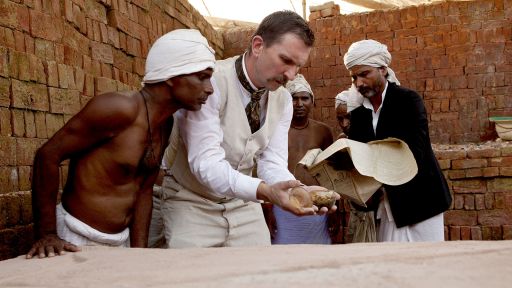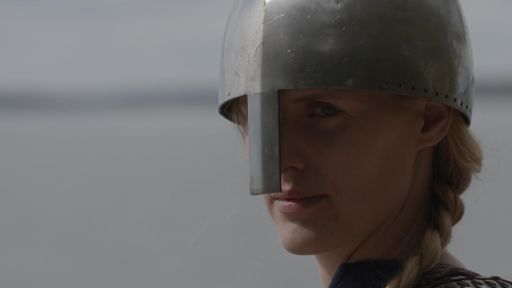TRANSCRIPT
Everybody knows this picture, it's become a kind of icon, even like an emblem of the human spirit.
Leonardo drew it in about 1490and he did it as a kind of answer to a riddle.
The architect Vitruvius from ancient Rome had proposed that a man could fit inside a square and inside a circle and for centuries after that people had wondered how that might work at a literal and at a metaphorical level.
Four cubits equal the height of a man.
Vitruvius' long-forgotten book, printed in 1486, stated that to achieve beauty and harmony, buildings must reflect ideal human proportions.
Before scientific standards, all measurements were taken from the body the foot, the digit, the step .
.
.
But to build something, the proportions must be known how many thumbs in a palm?
How many palms to a step?
Architects hoped to find the answer in Vitruvius' ideal proportions, unlocking secrets of ancient buildings.
Forty at the dial.
Nineteen at the rod.
But the book wasn't illustrated.
How could a human body fit proportionally inside a circle and a square?
The image of a human at the centre of a circle is an ancient way of relating individual existence to the infinite universe.
It proposes a linking between the two: the individual is a microcosmos a miniature reflection, in all its parts, of the universe or macrocosm.
As above, so below.
Vitruvius, square represents the material world his figure has a dual nature, inscribed in both the heavens and the earth.
His idea was appealing to Humanists values.
But without illustrations, the question remained: How to fit the body in a square and a circle without distorting its proportions, became an obsession for 15th century architects.
Those who tried failed.
Leonardo was fascinated with proportion.
During the Renaissance, the goal of art was the expression of harmony, and harmony is a matter of proportion.
Vitruvius gave complex measurements for the ideal body, but Leonardo did his own.
He needed to verify everything for himself.
And then he, too, undertook the quest for Vitruvian Man.
